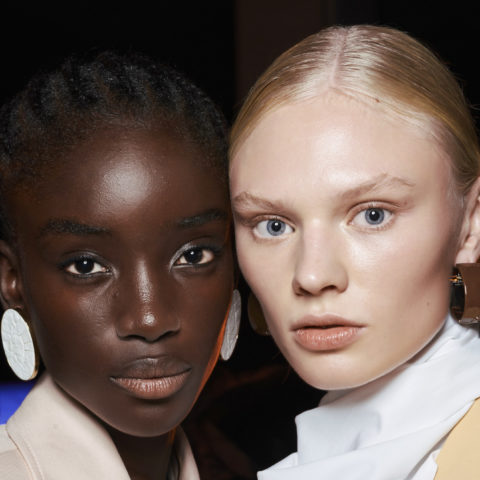About That Time A Derm Sliced Off My Skin In The Name Of Science
When you’re a long-time beauty editor, asking strangers, “How old do I look, exactly?” is more than a weird icebreaker; it’s a legit topic for serious scientific inquiry. So when I was invited by Olay to visit Harvard Medical School for a blunt assessment of how gracefully (or not) I’m aging—via a seriously thorough analysis of how my genes are acting—it’s an offer I can’t refuse. Have all my years of product slathering paid off? There’s only one way to find out.
Since 2012, a team at Harvard has been working together with Olay on the brand’s biggest ever research project, the Multi-Decade and Ethnicity (MDE) study. Led by dermatology prof Dr. Alexa Kimball, the study pored over genetic samples from 231 women, ages 20s to 70s, to figure out why the Gwyneths, J.Los and other wrinkle-resistant outliers of the world seem to age in slow-mo.
Now, like those research subjects, I came to volunteer a tiny chunk of my skin in exchange for the nitty-gritty data. After taking a numbing needle to my face, a doctor slices out a sample, a couple millimetres wide, with a tiny, terrifying circular blade. I didn’t feel anything as the straw-like tool was pushed in—deep enough to get all the revelatory layers of skin—like a cookie cutter pressing down into dough.
Two months later post-biopsy (that’s how long it takes to decode all the genomic deets), Dr. Frauke Neuser, principal scientist with Olay skincare, called to deliver the verdict. Here’s what I learned:
1. Coco Chanel was right. “Nature gives you the face you have at 20,” the couturier reportedly proclaimed, “but at 50 you get the face you deserve.” Yes, some of us are born lucky, but just as you can blow through your trust fund with bad life decisions, so too can you squander your good-skin genes. That’s because how your genes act or “express themselves” (e.g. how they produce proteins inside your cells) isn’t set forever: like a light dimmer, they can turn up or down, according to environmental factors (such as sun exposure), your lifestyle choices and skincare practices.
2. Only 10 percent of the population ages really well. That’s how many people look a decade younger than their true age, according to Olay’s study. And when researchers analyzed skin samples from the study’s “exceptional agers,” they pinpointed 2,000 key genes—responsible for everything from collagen production to controlling inflammation—that acted differently in these outliers (compared to the normals). “Their DNA activity didn’t slow down with age, and that’s really quite remarkable,” says Dr. Neuser.
3. There’s one anti-aging product that makes all the difference. Duh, it’s sunscreen. After years of hearing ominous warnings from derms (“If you love the sun, your skin cells die much earlier,” says Harvard’s Dr. Kimball), I’m religious about wearing SPF on the daily. And science says this—much more than any other factor—is what separates the slow-mo agers from everyone else. In the Olay study, explains Dr. Neuser, “the people who said they used sunscreen ‘always’ or ‘pretty much always’ were 78 percent more likely to be an ‘exceptional ager’ [an outlier who looks 10 years younger than their real age]” compared to those who didn’t use SPF so often.
4. All hope’s not lost if your skin genes are getting sluggish. If you’re not a wrinkle-defying outlier, as the decades go by, your cells will naturally show a decline in various VIPs (very important processes), including your skin’s ability to produce its own antioxidants and to self-repair/regenerate. The result: hello, signs of aging. But good news, certain ingredients can also act upon cellular pathways—akin to keys opening a lock—causing skin to act younger on a molecular level. For instance, carob fruit extract (a new addition to the revamped Olay Regenerist Micro-Sculpting Cream) helps activate the synthesis of growth factors, stimulates collagen production and speeds skin recovery.
5. As for me? I can’t pass for a college kid anymore. Buuut (obnoxious humblebrag warning) I do look pretty young for my age, and not just because of my sporadic moody breakouts. Using my chunk of skin, the researchers analyzed the expression of about 800 aging-related genes and calculated that my “Molecular Skin Age” is 28.6. Meanwhile, the degree of sun damage in my cells is “very little, comparable to someone in their early 30s. I would give you a thumbs up,” says Dr. Neuser. My actual age? 38. “If you keep doing the things you’re doing, the difference between your real age and your visible skin age is probably going to get larger over time,” she predicts. My skincare obsessiveness: totally justified.








